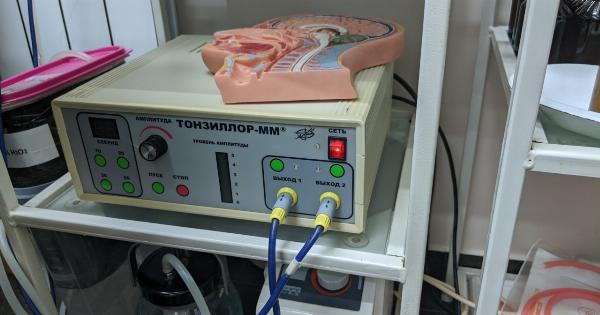Head and neck cancers are a diverse group of malignancies that arise in the oral cavity, pharynx, larynx, and paranasal sinuses.
While tobacco and alcohol consumption have traditionally been considered the main risk factors for these cancers, recent studies have highlighted the significant role of human papillomavirus (HPV) in their development. In this article, we will explore the link between HPV and head and neck cancers, shedding light on the underlying mechanisms and potential implications for prevention and treatment.
The Prevalence of HPV-Related Head and Neck Cancers
Over the past few decades, the incidence of head and neck cancers has been shifting, with a decline in cases associated with tobacco and alcohol use and an increase in HPV-related cases.
It is estimated that approximately 70% of oropharyngeal cancers are now HPV-positive, with HPV16 being the most commonly detected genotype. The rise in HPV-related head and neck cancers presents unique challenges and opportunities for healthcare professionals in terms of risk assessment, diagnosis, and management.
Understanding the Role of HPV in Cancer Development
HPV is a DNA virus that infects mucosal and cutaneous epithelial cells.
While there are more than 100 different types of HPV, only a subset of high-risk genotypes is associated with the development of various cancers, including cervical, anal, and head and neck cancers. HPV gains access to epithelial cells through micro-abrasions or breaches in the epithelial barrier.
Once inside, the virus can disrupt normal cellular pathways and promote uncontrolled proliferation, leading to the transformation of infected cells into cancerous ones.
Mechanisms of HPV-Induced Carcinogenesis
The oncogenic potential of HPV lies mainly in the viral proteins E6 and E7. E6 protein binds to and degrades the tumor suppressor protein p53, while E7 protein binds to retinoblastoma protein (pRB), disrupting its functions.
By targeting these critical regulators of cell cycle and apoptosis, HPV effectively subverts host defenses and creates an environment conducive to tumor growth and progression. Additionally, HPV can promote genomic instability, inhibit DNA repair mechanisms, and interfere with immune surveillance, further facilitating carcinogenesis.
HPV and Oropharyngeal Squamous Cell Carcinoma
Oropharyngeal squamous cell carcinoma (OPSCC) is the most common form of head and neck cancer associated with HPV infection.
It predominantly affects the tonsils and base of the tongue and tends to occur in younger individuals with limited exposure to traditional risk factors such as smoking and alcohol consumption. Patients with HPV-positive OPSCC have been found to have better overall survival rates compared to those with non-HPV-related OPSCC, highlighting the distinctive nature of these two subtypes.
HPV Testing and Diagnosis
Accurate and timely diagnosis of HPV-associated head and neck cancers is crucial for appropriate management and treatment decisions.
HPV testing can be performed using various methods, including DNA-based tests, RNA-based tests, and p16 immunohistochemistry. These tests aim to detect the presence of HPV DNA or RNA in tumor samples and assess the expression of p16, a surrogate marker for HPV infection.
Understanding the benefits and limitations of different testing approaches is essential for clinicians to make informed decisions regarding patient care.
Implications for Prevention and Vaccination
Given the significant role of HPV in the development of head and neck cancers, prevention strategies targeted at reducing HPV transmission are of utmost importance.
The advent of HPV vaccines, such as Gardasil and Cervarix, has revolutionized the field of cancer prevention. These vaccines effectively protect against HPV types most commonly associated with cervical cancer and have also demonstrated efficacy in reducing the incidence of HPV-related oropharyngeal cancers.
Wider vaccine uptake and education about safe sexual practices can significantly contribute to reducing the burden of HPV-related head and neck cancers.
Treatment Considerations for HPV-Positive Head and Neck Cancers
HPV-positive head and neck cancers have distinct clinical and molecular features compared to their non-HPV-related counterparts.
These differences have implications for treatment decisions, as HPV-positive tumors tend to respond better to therapies such as radiation and chemotherapy. The identification of novel therapeutic targets and the development of personalized treatment approaches hold great promise for improving outcomes in patients with HPV-positive head and neck cancers.
The Impact of HPV on Prognosis and Survival
Studies have consistently found that HPV-positive head and neck cancers are associated with better overall survival and treatment outcomes compared to their HPV-negative counterparts.
The reasons for this improved prognosis are multifactorial and may include differences in tumor biology, response to treatment, and host immune response. Understanding the underlying mechanisms that contribute to these survival disparities will not only aid in prognostication but also guide the development of targeted therapies for both HPV-positive and HPV-negative head and neck cancers.
Conclusion
The role of HPV in the development of head and neck cancers is now well-established.
The rising incidence of HPV-related oropharyngeal cancers, predominantly affecting younger individuals, has significant implications for prevention, diagnosis, and treatment. It is important for healthcare professionals to stay updated on the latest research and guidelines to optimize patient care and outcomes.
With continued efforts in vaccination, education, and research, we can work towards reducing the burden of HPV-related head and neck cancers and improving the lives of those affected.





























